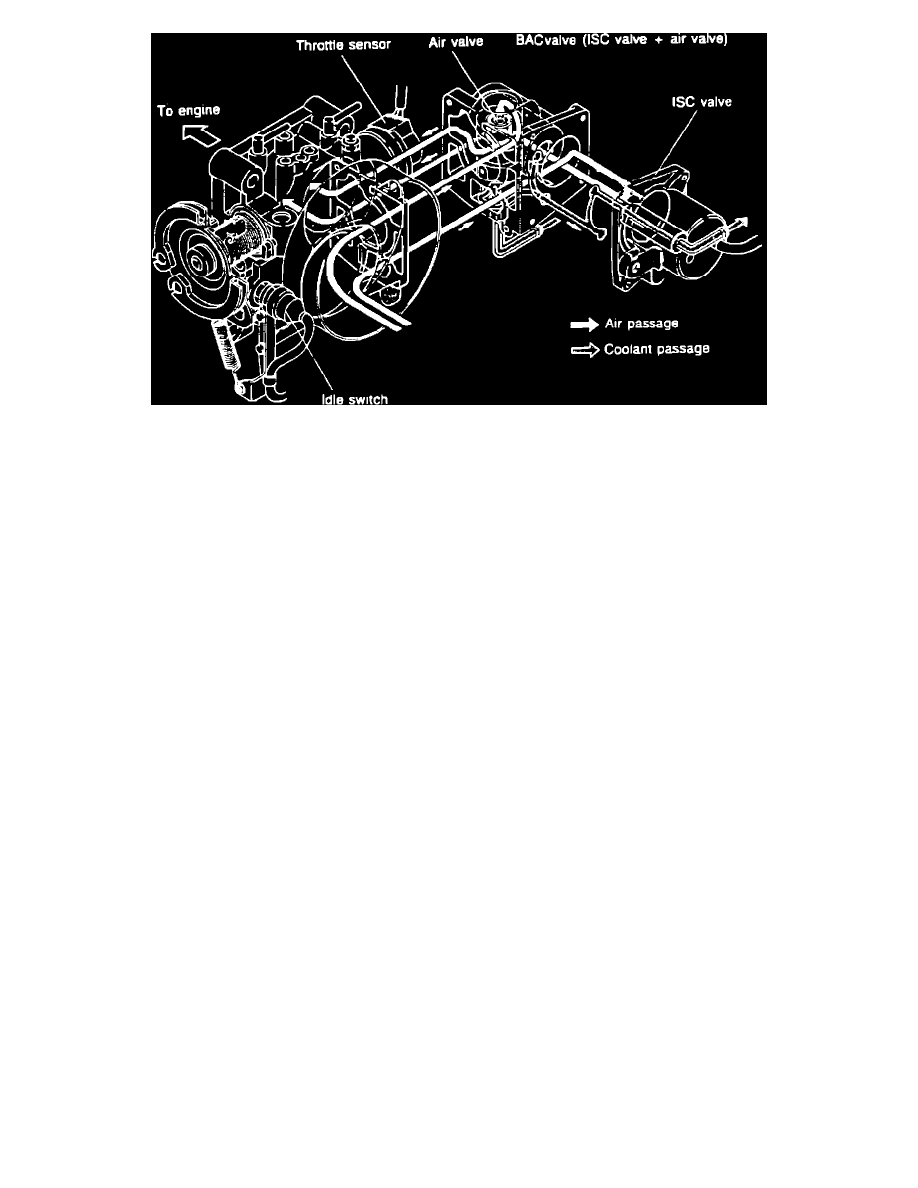MPV L4-2606cc 2.6L SOHC (1989)

Fig. 119 Idle speed control system.
To improve idle smoothness, the idle speed control (ISC) system controls the intake air amount by regulating the bypass air amount that passes
through the throttle body. The computerized engine control related components of the idle speed control system are the bypass air control valve (BAC)
and the control system.
The BAC valve consists of the air valve, which functions only during cold engine conditions, and the idle speed control (ISC) valve which works
throughout the entire engine speed range.
During the warm up phase the engine receives more fuel due to the influence of an auxiliary air device (BAC valve). This is to overcome the frictional
resistance in the cold engine and to guarantee a stable idle speed.
There are increased frictional resistances present in a cold engine which must be overcome at idle speed. The engine is therefore allowed to take in
more air through the air valve by bypassing the throttle valve. Since this additional air is measured by the airflow sensor and is taken into account when
the fuel is metered, the engine receives more air/fuel mixture. With a cold engine a stable idle speed can therefore be achieved.
The ISC valve is used to regulate the idle speed and keep it within a set range. The valve accomplishes this by regulating the amount of air that is
allowed to bypass the throttle plates. As the idle speed varies out of the specified range, the idle speed control valve increases the passage size, if the
idle speed is too low, or decreases the passage size, if the idle speed is too high. Since this adjustment of airflow is measured by the airflow sensor and is
taken into account when the fuel is metered, the proper air/fuel mixture is maintained throughout any idle speed adjustments.
The control system consists of the airflow sensor, throttle sensor, atmospheric pressure sensor, engine load (E/L) control unit, engine control unit
(ECU), clutch switch (M/T only), neutral switch (M/T only), ignition coil, inhibitor switch (A/T only), water thermosensor, and the power steering
pressure switch. These components act together to control the idle speed.
The airflow sensor measures the amount of incoming air. The computer uses this measurement to determine the amount of fuel to inject into the intake
manifold with each engine cycle. The throttle sensor is a potentiometer splined to the throttle shaft. The potentiometer rotates with the shaft as the
throttle plates open and close. The varying resistance of the potentiometer alters the reference voltage emitted from the engine control unit (ECU) and
creates a signal for use as input by the ECU. The atmospheric pressure sensor detects atmospheric pressure and sends a signal to the engine control unit.
The engine load (E/L) control unit detects that an engine load is being applied and sends a signal the the control unit. The clutch switch detects in-gear
condition and sends a signal to the control unit. The switch closes when the clutch pedal is released. The neutral switch detects in gear condition and
sends a signal to the engine control unit. The switch is on when the transmission is in gear. The negative terminal of the ignition coil is used as an
engine speed input by the engine control unit. The inhibitor switch detects in-gear conditions and sends a signal to the ECU. The switch is on when the
transmission selector is in the "neutral" or "park" position. The power steering pressure switch detects power steering operation and sends a signal to the
engine control unit. The switch is closed when the steering wheel is turned. The water thermosensor detects coolant temperature and sends a signal to
the engine control unit.
